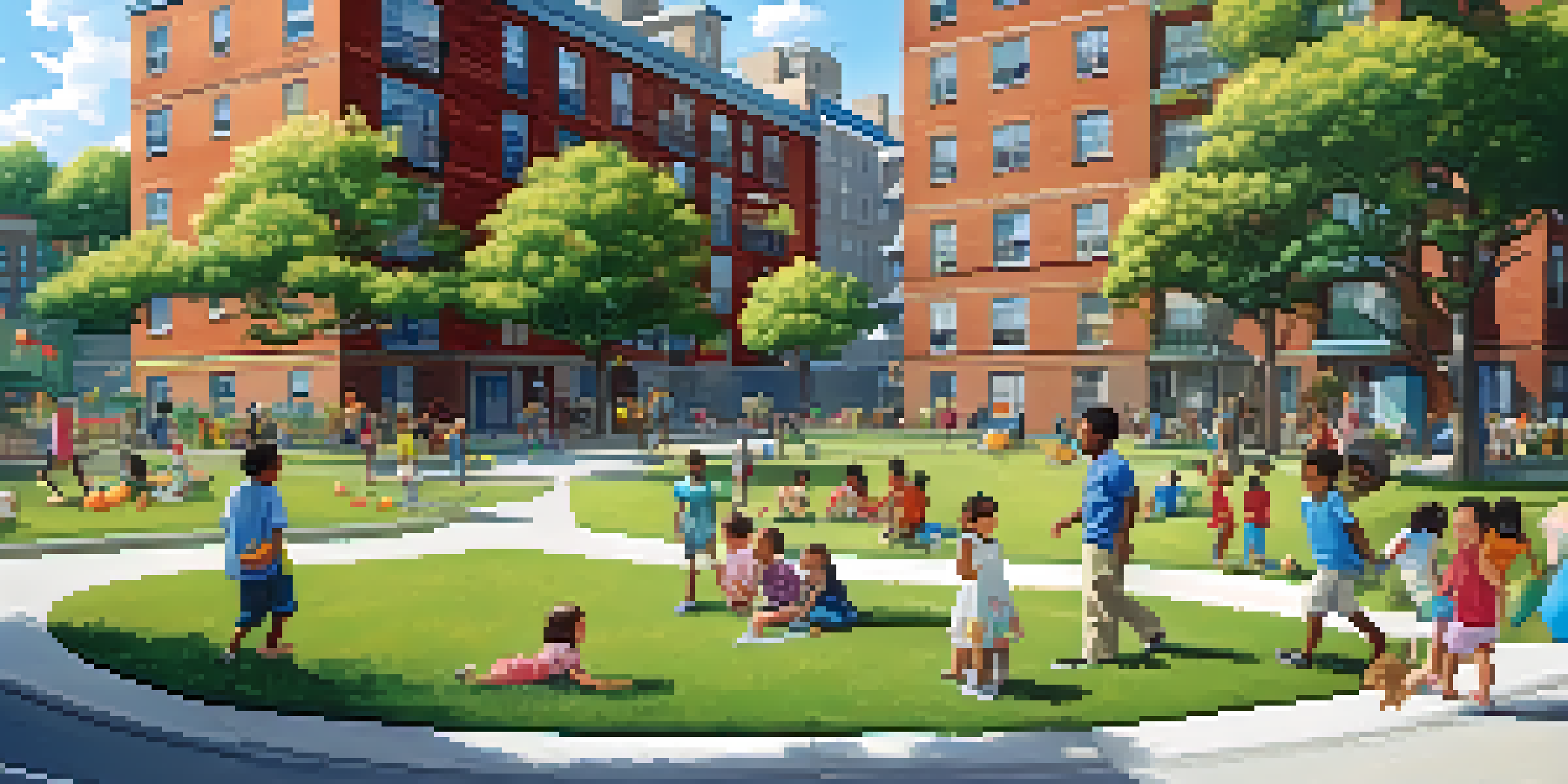Public Housing's Role in Supporting NYC Urban Communities

Understanding Public Housing in New York City
Public housing in New York City serves as a crucial safety net for low-income families, providing them with affordable living options. These developments are not just buildings; they are vibrant communities that foster a sense of belonging. The New York City Housing Authority (NYCHA) manages a significant portion of these units, aiming to create safe and sustainable environments for residents. By offering affordable housing, public housing plays a pivotal role in combating homelessness and housing insecurity.
Economic Benefits of Public Housing
Public housing contributes to the local economy by creating jobs and supporting local businesses. When residents are housed in stable environments, they can invest in their communities, leading to increased spending in nearby shops and services. Moreover, public housing projects often involve significant construction efforts, which create employment opportunities for local workers. This economic uplift is vital for neighborhoods striving to thrive amidst urban challenges.
Public Housing Supports Communities
Public housing not only provides affordable living options but also fosters a sense of belonging and community among residents.
Community Building and Social Cohesion
Public housing fosters a sense of community where residents can connect and support one another. Shared experiences in these neighborhoods often lead to stronger social bonds, as families come together for community events and local initiatives. This sense of belonging is essential, particularly in a bustling metropolis like New York City, where individuals can easily feel isolated. Public housing not only provides shelter but also cultivates a supportive network among its residents.
Educational Opportunities in Public Housing Areas
Access to quality education is a critical factor in breaking the cycle of poverty, and public housing plays a key role in this. Many public housing developments are strategically located near schools and educational resources, making it easier for families to access these opportunities. Additionally, programs aimed at enhancing educational outcomes often emerge in these communities, providing tutoring and after-school activities. By prioritizing education, public housing helps empower residents to build brighter futures.
Economic Boost from Public Housing
By creating stable housing environments, public housing contributes to local economies through job creation and increased spending.
Healthcare Access and Public Housing
Residents of public housing often face barriers to accessing healthcare, making it essential for these communities to provide support services. Many public housing complexes partner with health organizations to offer on-site clinics and health education programs. This improves overall well-being and reduces healthcare disparities among low-income populations. By addressing health needs directly within the community, public housing initiatives enhance the quality of life for residents.
Addressing Homelessness Through Public Housing
One of the most significant roles of public housing is its impact on reducing homelessness in NYC. By providing stable housing solutions, these developments help individuals and families transition out of shelters and onto a path of self-sufficiency. Furthermore, various programs associated with public housing focus on supportive services, such as job training and mental health resources. This holistic approach ensures that residents not only have a roof over their heads but also the tools to thrive.
Addressing Education and Health Needs
Public housing developments often enhance access to education and healthcare, empowering residents to improve their quality of life.
Challenges Facing NYC Public Housing
Despite its many benefits, public housing in NYC faces numerous challenges, including funding cuts and maintenance issues. Aging infrastructure and limited resources can affect the quality of living conditions for residents, leading to frustrations and safety concerns. Moreover, the demand for affordable housing continues to grow, often outpacing the available supply. Addressing these challenges is vital for ensuring that public housing remains a viable option for future generations.
The Future of Public Housing in NYC
The future of public housing in New York City hinges on innovative solutions and community engagement. As cities evolve, so too must the strategies employed to support residents in public housing. Collaboration between government agencies, nonprofit organizations, and community members will be crucial in addressing the needs of these neighborhoods. By prioritizing investment in public housing, NYC can create a more equitable urban landscape for all its residents.